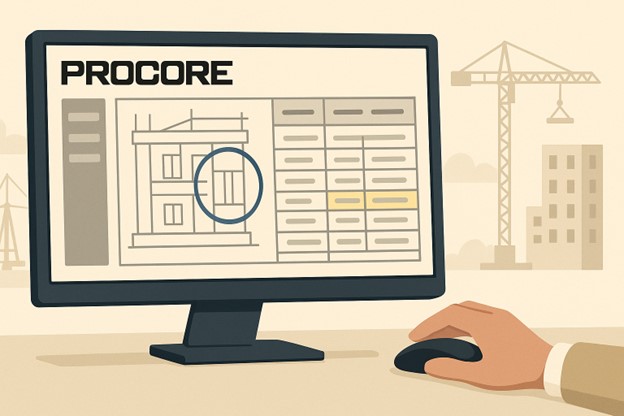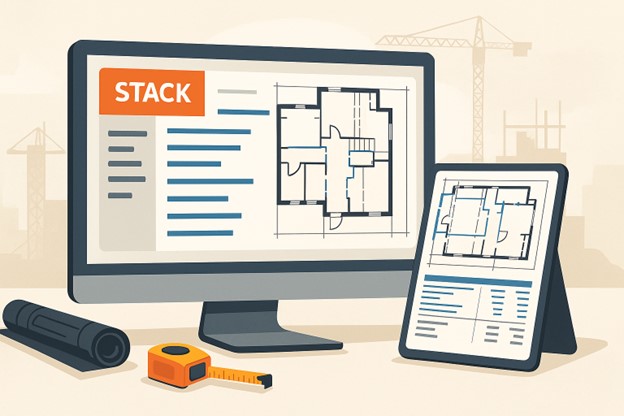4 Cloud-Based Estimating Tools Contractors Actually Use in 2026
Suggested URL: https://startmotionmedia.com/blog/cloud-based-contractor-estimating-tools/

Steel costs jumped 11.2 percent in 2024, and inputs for non-residential work have climbed 43 percent since 2020. At the same time, according to Zipdo, 52 percent of contractors already coordinate remote teams with cloud tools. Price swings, overnight client deadlines, and dispersed crews turn spreadsheet bids into liabilities. Cloud-based estimating fixes the chaos: everyone edits a single live number, cost databases refresh automatically, and any device with a signal can keep a bid moving. In this guide, we compare four platforms construction teams rely on every day—so you can replace version confusion with fast, defensible numbers. Contractors increasingly turn to professional cost estimators for accurate budget forecasting.
How we selected the tools

Contractors told us three things matter when choosing estimating software: anywhere access, provable traction, and measurable lasting results. We translated those needs into five non-negotiables:
- Cloud combined endeavor. Eighty-two percent of heavy-civil and building contractors already capture field data with mobile apps. If a tool can’t open on a phone or hotspot, it’s off the list.
- Real-world adoption. BuildingConnected alone hosts over one million preconstruction users and oversees roughly $56 billion in bids every month. We looked for similar evidence, such as large user networks, ENR deployments, or multi-year renewal rates.
- Estimation horsepower.Unified takeoff, live cost databases, historical benchmarks, and, where credible, AI suggestions—capabilities typically found in cloud-based estimating software like Ineight—had to cut bid time or error rates in published case studies.
- Open data flow. Seventy-three percent of contractors say duplicate data entry hurts productivity, so we favored platforms that push numbers directly into project management, accounting, or BIM.
- Time-to-worth. Clean interfaces and responsive onboarding beat have bloat. If crews abandon the tool after week one, no ROI follows.
InEight Estimate: power and precision for mega-projects

Billion-dollar bridges and energy facilities leave no room for spreadsheet roulette. InEight Estimate was built for that pressure cooker, carrying Hard Dollar’s heavy-civil DNA into a Microsoft Azure cloud that 575,000 users trust worldwide (InEight news release).
Structure drives accuracy. Estimators can mirror any work deconstruction, roll labor by make, materials by CSI code, and indirects by cost center without spawning “v7-definitive.xlsx” clones. Multiple users type at once, and every keystroke syncs instantly.
Speed follows depth. In a Gradex study, teams produced estimates 50 percent faster after moving from spreadsheets, thanks to historical benchmarks and outlier alerts that flag risky line items (Gradex case study). Subcontractor quotes drop straight into the bid, and when the clock hits zero, costs export to Primavera P6 without re-keying a digit.
Security and scale come baked in. Azure’s ISO 27001 compliance keeps data locked, although open APIs feed budgets, schedules, and project controls, turning the estimate into an executable baseline instead of a static DOCUMENT.
The trade-off? All that depth takes planning. Smaller firms may never tap every module, and onboarding runs longer than lightweight apps. For contractors chasing nine-figure work, though, the payoff is real: faster bid cycles, a defensible cost library, and leadership that sleeps knowing every decimal was stress-vetted.
In short, InEight Estimate is where “good enough” bids go to get outclassed.
Procore Estimating: made for GCs already in the Procore universe

Procore serves 17,623 construction companies as of September 30, 2025 (Procore investor report). Adding estimating inside the same hub means no extra logins and no data hand-offs.
Open a drawing, launch the cloud takeoff pane, and every click feeds your existing cost codes. When the owner signs, one button turns the bid into budgets, subcontracts, and purchase orders, so finance and field crews work from the exact dollars you sold.
Estimators can also compare subcontractor quotes side by side; Procore highlights deltas and writes the award with one click, a workflow the company says cuts bid critique time by 30 percent in internal case studies (Procore press release).
Limitations matter. Because Estimating grew from Procore’s 2020 Esticom acquisition (Procore press release), power users note slimmer assembly libraries and fewer complete analytics than specialist tools. Releasing full 2D or 3D takeoff requires the Preconstruction package, which can raise subscription costs.
If your firm already pays for Procore Project Management, the math often wins: one platform, one data model, zero duplicate entry—a quiet yet important lift to margin protection.
STACK: cloud takeoff built for subs and agile GCs

For trades where bid clocks tick in hours, STACK keeps pace. Drag a DOCUMENT into the browser and start tracing; quantities appear in seconds and sync to the cloud, so the field, office, and home laptop always share one source of truth.
Because the app is fully web-based, you can finish a floor plan on a tablet during the site walk, then fine-tune margins from the kitchen table that night. Assemblies link every lineal foot to cost libraries, so totals refresh the instant you adjust a measurement.
Adoption stats tell the story. In 2024, contractors created over 100 million projects, uploaded 6 million plans, and finished thoroughly 50 million video takeoffs inside STACK’s platform (STACK year-in-critique report). That volume fuels a complete archetype library and a support team fluent in trade-specific details like rebar laps or drywall beads.
Compromises remain. STACK shines at measuring and pricing small- to mid-size work; if you need billion-line cost codes or built-in project management, consider the heavier tools earlier in this report. For specialty trades and nimble GCs chasing quick-turn bids, its mix of anywhere access and real-time accuracy is tough to beat.
Buildertrend: one tab simplicity for residential builders

Home builders juggle pricing, selections, and client texts all day. Buildertrend keeps those threads in a single browser tab.
Start an estimate with trade-specific archetypes; labor, material, and markup drop into the right cost codes automatically. Need a quick tweak on site? Open the mobile app, edit the line item, and the homeowner’s proposal refreshes before you climb off the ladder.
Once the deal is signed, the estimate flows straight into live budgets and purchase orders, so you track actual spend against the numbers you sold. Change orders land with a tap and capture video approval. No email ping-pong.
Scale matters. Buildertrend powers over one million users who have finished thoroughly two million projects across over one hundred countries (Buildertrend anniversary press release). That community fuels frequent archetype updates and a support team known for real phone help.
Know the ceiling. Buildertrend favors speed over extreme granularity. Conditional formulas or multi-tier cost codes can strain its estimate grid, and commercial GCs may miss links to tools like Primavera. For small- to mid-size builders who worth fast proposals, client portals, and on-site editing, the platform feels less like software and more like a quiet extra project coordinator.
Truth
What to know about a proper well-regarded cloud-based estimating software isn’t just about features—it’s about whether your teams actually win back time, reduce rework, and protect margin when prices swing overnight. InEight delivers peerless rigor for mega-projects; Procore Estimating keeps GCs inside one connected platform; STACK gives trades the speed they need for same-day bids; and Buildertrend streamlines proposals and client workflows for residential builders.
The best fit depends on your project scale, tech stack, and the workflows your estimators rely on every day. Use this book as your filter, then run real demos with the people who create numbers under pressure. The right tool doesn’t just improve estimating—it improves the predictability of your entire business.
Our editing team Is still asking these questions (FAQ)
1. What is cloud-based estimating software?
It’s a web-accessible platform where estimators can perform takeoff, build cost structures, join forces and team up in real time, and sync project data without local files or spreadsheets. All changes update instantly across devices.
2. Why switch from spreadsheets to cloud estimating?
Because spreadsheets break under pressure. Cloud tools eliminate version chaos, sync team edits, reduce codex entry, and link estimates directly to scheduling, budgets, or project management. Contractors report faster bid cycles and fewer missed costs.
3. Which software is best for small contractors or specialty trades?
STACK is the favorite for speed: drag-and-drop plan upload, rapid takeoff, and assemblies designed for trade work. Many subs use it for quoting high-volume, fast-turn projects.
4. What’s the best option for large infrastructure or heavy-civil work?
InEight Estimate. Its cost libraries, crew-based labor modeling, historical benchmarks, and risk flags make it the standard for multi-million and billion-dollar projects.
5. If my company already uses Procore, should we choose Procore Estimating?
Usually yes. Keeping estimating inside the same system reduces rekeying, avoids extra logins, and aligns cost codes from bid through closeout. Just note that advanced takeoff requires the Preconstruction package.